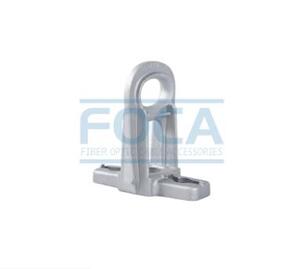-
 Find in Members
Find in Members Find in Videos
Find in Videos Find in Channels
Find in Channels
This website uses cookies to ensure you get the best experience on our website.
To learn more about our privacy policy Click herePrivacy Preference
- Tags - #ADSS Cable Clamp
-
- Last updated June 20, 2022 0 comments, 120 views, 0 likes
More from foka foka
More in Politics
Related Blogs
Archives
BASIC TECHNICAL REQUIREMENTS FOR THE CONSTRUCTION OF ADSS OPTICAL CABLE
Body
The structure of ADSS fiber optic cable
We are a manufacturer of communication equipment. Our products include ADSS Cable Clamp, etc. Let me share with Dahua the basic technical requirements for the construction of ADSS optical cable.
ADSS is the abbreviation of All Dielectric Self-Supporting aerial optical cable in English, which means "all-dielectric self-supporting optical cable", and its structure does not contain any metal materials. ADSS fiber optic cable structure is currently divided into two categories: layer stranding type and central bundle tube type. Its structure diagram is as follows:
Basic technical requirements for the construction of ADSS optical cable
The location of the optical cable hanging point is selected to meet the safety distance regulations of "working on live line towers". (Minimum distance from live wire: 110KV≥1.5m, 220KV≥3.0m). According to the "Safety Regulations", the installation of ADSS optical cables on live lines can be regarded as work on live line towers. Therefore, the minimum distance between the operator's range of activities and the tools and materials they carry should not be less than the above-mentioned safe distance (110KV is not less than 1.5 meters, and 220KV is not less than 3.0 meters). Insulated non-polar ropes, insulated safety belts, and insulated tools must be used during construction. The wind force should not be greater than level five, and special personnel should be set up to monitor them. If the above conditions cannot be met, construction should be carried out according to live work or power outage. The glass fiber core in the ADSS optical cable is extremely fragile and will be damaged by stretching and lateral pressure. Therefore, the optical cable cannot be squeezed and stretched beyond the standard when the optical cable is installed. During construction, a tension pay-off machine should be used for tension pay-off, the traction tension should be stable, the traction tension should not exceed the index requirements, and the tension and lateral pressure during the erection of ADSS optical cables should not be too large (public account: power transmission and distribution lines).







Comments